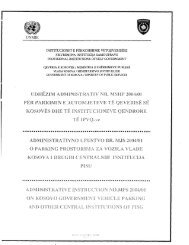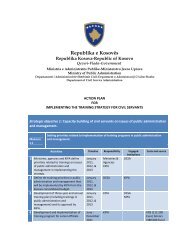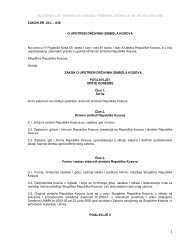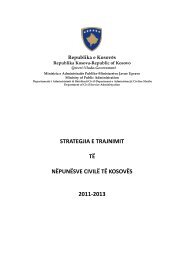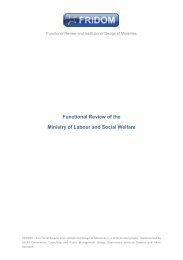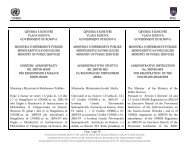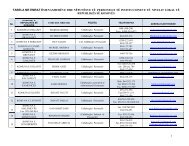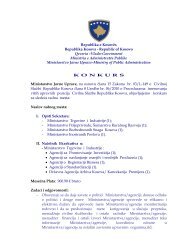Download
Download
Download
You also want an ePaper? Increase the reach of your titles
YUMPU automatically turns print PDFs into web optimized ePapers that Google loves.
Some advantages of the proposed structure include: reduction in vacant positions that MOH does<br />
not intend to fill and cannot resource; joining the management role together for personnel and<br />
administration where one of these unfilled vacancies exists and thereby providing a management<br />
structure that is more affordable and has a more usual level of employees (current structure has<br />
division managers for very few employees); and creating the potential for more flexible use of<br />
resources by aggregating some functions and reducing the detailed designation of jobs.<br />
This is just one example of a possible reorganisation of these functions. It would need to be<br />
analysed in more depth. Suggestions need to be made for the level of staffing and these suggestions<br />
need to be considered by the MOH before a firm recommendation could be made.<br />
In the medium term the government may wish to consider using a back office function servicing<br />
many ministries for some of the services set out above.<br />
Department of Budget and Finance: This department has nine staff. The Director is being<br />
recruited, making a total of 10. It is organised into two divisions as set out in Appendix F. The<br />
Division of Budget has a manager and three staff. The Division of Finance has one manager and<br />
five staff positions, but we have been advised that the Assets Officer’s position has been moved to<br />
the Department of Administration. This function could be added to the “Administration Services” in<br />
the diagram above.<br />
The role of the Chief Financial Officer is carried out by the Director of the Department. We have<br />
been advised that the law requires this position to report to the PS.<br />
In interviews with staff from this department the following issues were raised. Some possible<br />
changes are noted.<br />
Process issues<br />
Very detailed sign off, documentation and other processing requirements for making<br />
payments (eg, five signatures for payments) with opportunities to streamline these. If this is<br />
done, it would require changes to regulations for all ministries. The Government may wish to<br />
consider reviewing the major business processes that are common across ministries and<br />
look for ways to improve their efficiency, including options for shared back office functions.<br />
Budgeting issues<br />
Problems with a lack of alignment between capital and recurrent budgeting and planning,<br />
including a position dealing with donor capital being located under the Department of<br />
Strategic Management and poor communications between that position and the Department<br />
of Budget and Finance. This contributes to a lack of quality in capital planning along with<br />
other issues such as the approach to capital planning being reactive and not sufficiently<br />
forward looking. There are problems with commissioning buildings without considering<br />
recurrent costs. The wider issue of a lack of alignment between capital and recurrent<br />
budgeting needs to be addressed through the planning and budgeting process, but the issue<br />
with the structural separation could be addressed by locating the capital investment role with<br />
the finance and budgeting functions. At a minimum, there should be clear requirements for<br />
this donor coordination and donor related capital planning functions to exchange information<br />
freely with the budget and finance functions.<br />
MOH manages some capital for agencies reporting to it which some staff think could be<br />
better managed by the agency, so decision making is better aligned to the actual capital<br />
requirements of the agency and to improve the clarity of roles and accountabilities. There<br />
are issues with capital planning and management in agencies identified in the 2007 report<br />
from the Office of the Auditor General that would need to be considered in making any<br />
changes to roles and responsibilities for capital planning. 5<br />
5 The Office of the Auditor General’s report for 2007 identified issues with a lack of financial statements, procurement,<br />
capital being purchased and not used, service issues in regulating medicines, and unauthorised purchases. The MOH<br />
rejected many of these findings and the OAG did not accept many of the reasons put forward by MOH.<br />
14



